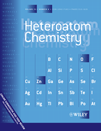New Supramolecular Triorganotin(IV) Dithiocarboxylates as Potential Antibacterial Agents
Contract grant sponsor: Higher Education of Pakistan.
Contract grant sponsor: University Research Fund of Quaid-i-Azam University, Islamabad, Pakistan.
ABSTRACT
Four triorganotin derivatives of general formula C10H10NS2SnR3,, where R = CH3 (1), C4H9 (2), C6H11 (3), and C6H5 (4), have been synthesized by the metathesis reaction of 1,2,3,4-tetrahydroisoquinolnium salt of ligand with triorganotin(IV) chloride in the 1:1 ratio. These complexes were characterized by elemental analysis, Raman, IR, multinuclear NMR (1H, 13C, and 119Sn), and mass spectrometry. The crystal structure confirmed a supramolecular zig-zag chain structure mediated by S–H (2.968 Å) for complex 4 with the central Sn atom exists in a distorted trigonal bipyramidal geometry. A subsequent antibacterial study indicates that the compounds are biologically active.




